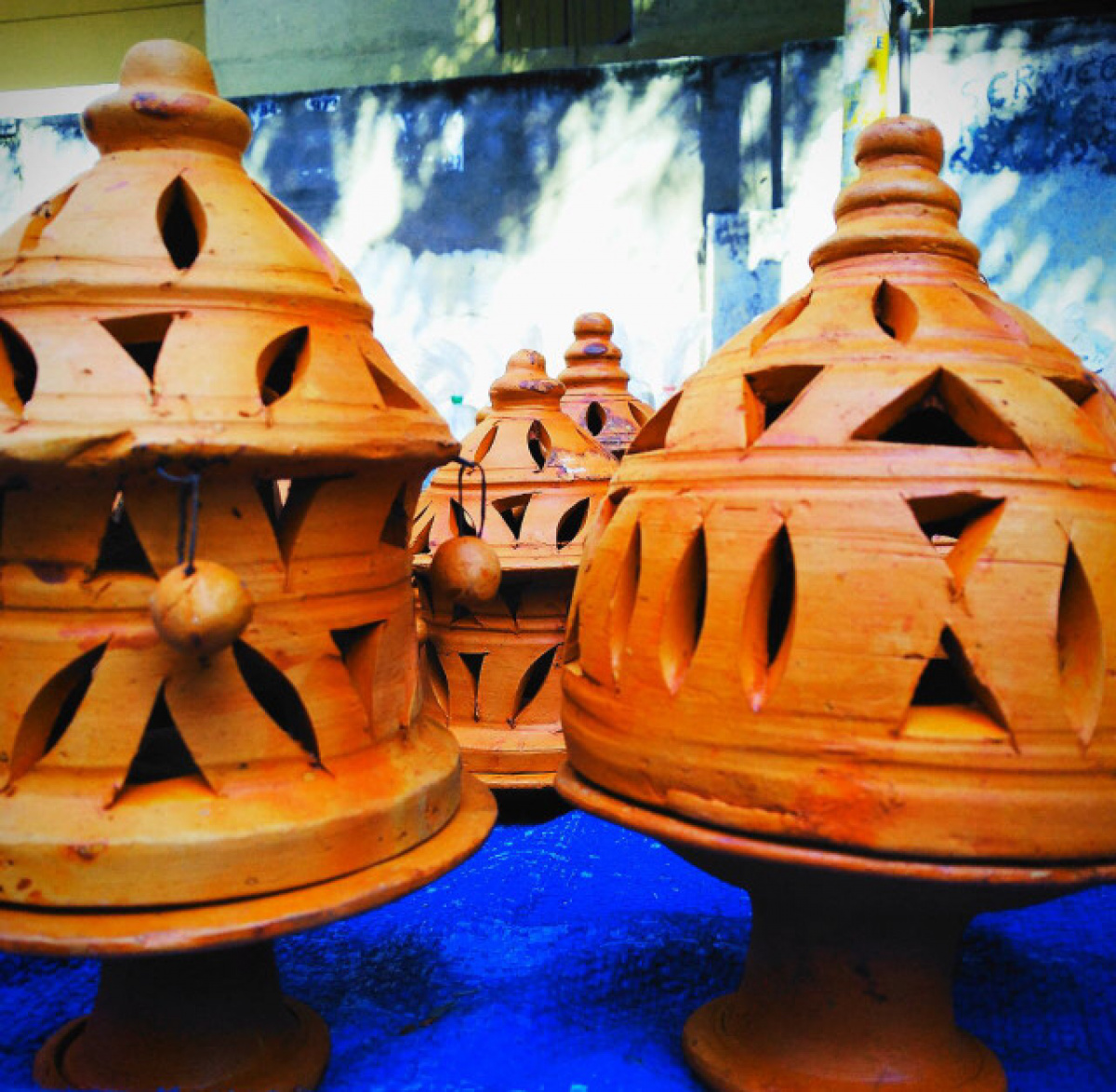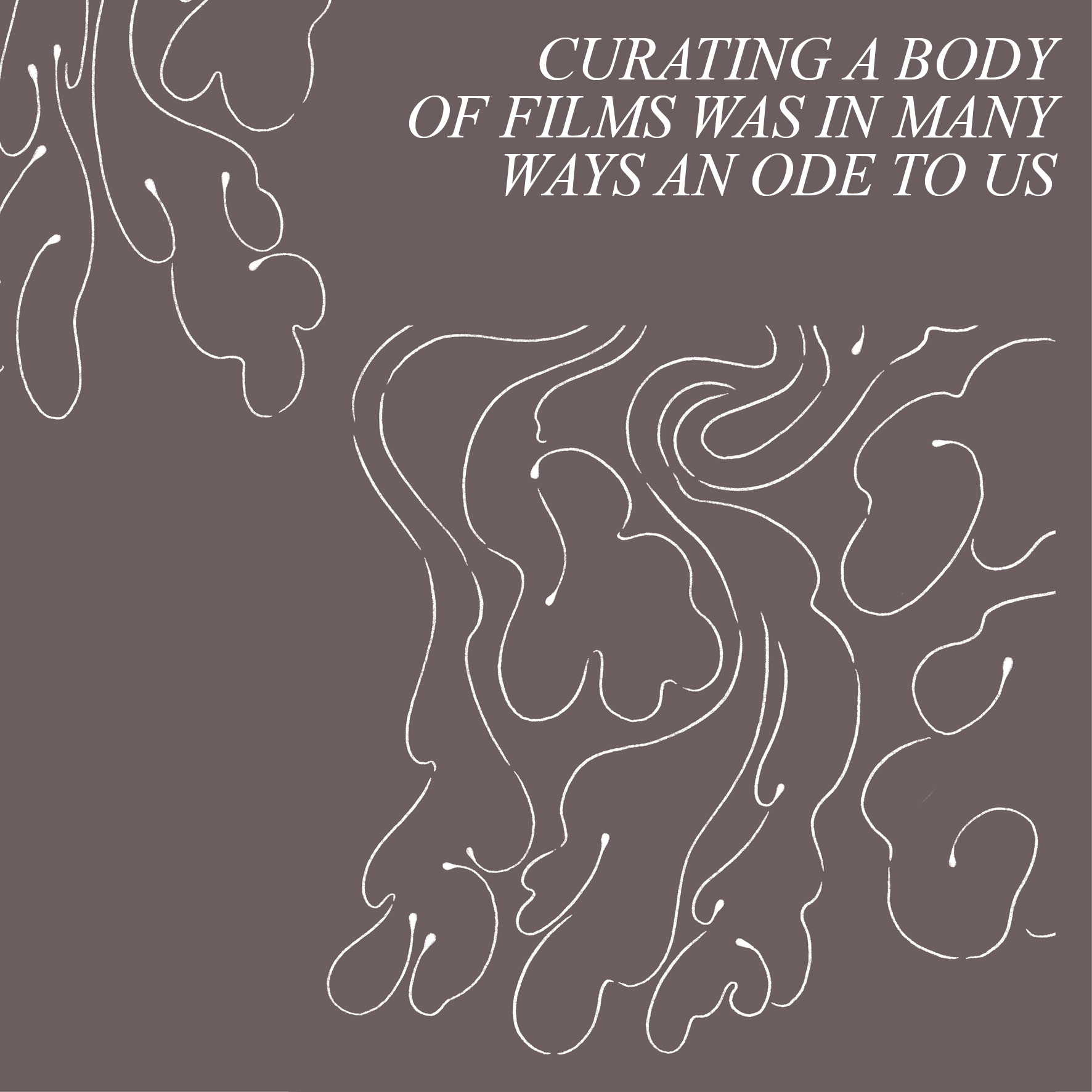
On Exposing the Curatorial «Us»: Curatorial Notes #1
How can we decentralise the power of curatorial spaces? According to our writer, we need to take into account irrationality as a creative process.
An expanded version of this text has been published in the Norient book «Politics of Curatorship: Collective and Affective Interventions», edited by Philipp Rhensius and Monia Acciari (Norient Books 2023).
I see curatorship as a means for a whole array of expressions to take precedence in a creative process. Curating not only enables me to expand a certain sensitivity, focus on an interest, or answer a question. It also offers the opportunity to share, learn, and – certainly for me – heal. The adversity experienced in a creative process is – now more than ever – related to the bias of a digitally connected world. In this text, I seek to address, in a more or less curated form, the pleasure in being able to operate at a distance, but also the pain of distances and absences that feeds an artistic intervention.
Curating is a many-sided term which is appropriated by several disciplines, from fine arts to musicology, from cinema to archival practices. In a discussion with David Francis, Alexander Howard, and Michael Loebenstein, the archival curator and film preservationist Paolo Cherchi Usai (2020) offers material for reflection regarding curatorship. He suggests that spaces – perhaps more than artefacts – are key to exploring the intellectualization of curatorship both as concept and as practice. There is value in this. Spaces are «construction(al)» of passions, private experiences, memories, and ideas. Cherchi Usai goes on to argue that the traditional distinction between film archives and film museums is bound to specific affiliations, methodological approaches, and perceptions of what art does, how it is acquired, and most crucially how it is shared. (I would argue that the same holds for the distinction between film and music festivals.) Perhaps I am less inclined to agree with this. To continue, Cherchi Usai and his interlocutors suggest that the traditional separation between film archives and film museums needs to be questioned, writing that «we believe that every organization needs to interpret (...) a collection to the public (...) and the public should be guided by some kind of curatorship» (Cherchi-Usai 2020, 8).
Untold Spaces
According to Cherchi Usai, in the context of film conservation and preservation – and to an extent of museology – the act of curating is seen as a form of «guidance» that more or less traces for the audience the journey of an artefact within a specific contextual history. For the appropriate conservation and public sharing of an artefact, curatorship should and can happen within the limitation of canonical spaces. Thus, to curate is to think about a space, within a space, through a space, and from a space.
In this process, it is not only the sensibilities of the «curator», but those of the audience that perhaps need more attention; particularly the aspirations of a generation of viewers (Acciari 2019) with fresh views, a great deal of enthusiasm, and a growing sensitivity towards what they see and hear. This brief intervention seeks to move beyond authoritarian and aspirational attitudes towards curatorship which treat a film, a song, or another form of artistic expression as a distinct object of «art» – an almost allegorical project with ambitious and abstract characteristics determined by personal taste – rather than an artefact: a piece of art made by people for the people. This intervention seeks to contribute to the idea of curatorship as suggested by Cherchi Usai, and the idea of the space and the personal.
Writers and intellectuals have written extensively on curatorship through via experiential routes (Papathanasiou 2015) and critical or theoretical standpoints (Dovey 2015; de Valck 2007; Iordanova and Torchin 2012), offering varying definitions of this highly ambivalent practice. Others have offered a perspective stemming directly from practice (Peyer 2010); others still have observed curatorship to try and assess the subtle line between curating and programming (Bosma 2015).
However, in this critical intervention I would like to expand what we know about curatorship as a polycentric, rather than monocentric, practice. Refraining from focussing on one single strand, the idea of curatorship is to capitalize on a kaleidoscopic approach which converges traditions, practices and experiences to offer a «spatial» view. In this approach I’ll consider the pathways that have guided the work around NFF 2022, the space of curatorship, and the hardships of a community-in-the-making.
The Jam-Packed Digital Space
Boxed within the pixelated boundaries of a small portion of an already saturated screen, a team of seven strangers met to discuss modus operandi, practices, and professional experiences. The aim was to access a little more than our image on the screen. This is the backdrop of where we were as a team.
Looking at curation through the lens of spaces offers a chance to reassess the sites, both tangible and intangible, that shape our existence and our intimate lives. Reconsidering spaces of curatorship as emerging from a distinct creative desire allows for a less set definition of what curatorship does and is. Considering spaces of curatorship (and their emotional infrastructure) allows us to decouple the choice of one film over another from the parameters of personal taste. A film is not only an object of scrutiny, but also a dense metaphor of absences and disconnections.
At NFF 2022 I have been led to reflect on my practice as curator in tandem with others, and to transcend our differences to find a common space to meet. At first, I was challenged by the idea of selecting a film purely on the naïve basis «let the film guide you». Particularly as I was asked to rely only on the film – on the cinematic object as art, as per Cherchi Usai’s writing – and on the experience of viewing.
There were other significant factors regarding what the digital space cannot reveal, and the need to allow other questions and senses to have a role. Diverse forces shape the reality of our lives in different parts of the world and that inevitably affects how we think creatively. There is no rational ideology or scientific method on which to base curatorial principles. Instead, the seemingly irrational drives distinct curatorial choices.
In the process of finding collectival curatorial harmony, questions inevitably emerged, such as: where do we, individually, watch films? And how might I and my peers engage with the same film at misaligned spatial and temporal intervals? How is the selection and appreciation of films influenced by the context we live in? What is the difference between curating from a zone of war, from a metropolis far from your home country, from within the four walls of a small apartment in London, and from the edge of a tranquil and silent meadow in the English countryside? How can we transcend our provenance and affiliations to enable or push forward a curatorial process? Those questions set the backdrop for an intellectual irrationality that governed us throughout our journey; an irrationality that was tacit and yet constitutive of a «creative social order».
Curating «Us»: the Trauma
The challenge presented by digital space was the impossibility of our coexisting, and us each being subordinated to a different time and space. Yet within this creatively joined and disjointed dimension we found, pluricentrally, a hidden and valuable space made of our traumas:
The trauma of a loss;
The trauma of a war;
The trauma of an abandonment;
The trauma of being silenced;
The trauma of distance from home.
The common ground of untold traumas allowed us to exist in an intangible space, to which the digital was purely a channel. «Perceiving» one another, rather than telling one another, allowed us to overcome the preconceptions of constructed personal CVs. Curating meant perceiving the tapestry of who we are.
Within the density of a digital absence we built, creatively, the programming of the festival and within it a space of reflection, of connection, of exchange, and of healing.
Thus, I argue that curating is not necessarily a practice that guides an audience, or an obligation towards a film as object bound to the specific affiliation of cinema-going. Curating a body of films was in many ways an ode to «us» – to those who tacitly decide to assemble the broken pieces of personal lives into a collective response and a shared sentire (meaning to feel or perceive). Fragments of emotions, shattered hopes, and the loud voices of the unheard, are part of the perceptual journey of curation. Renouncing the assumption of a single modality of sentire, or the assumption of who is an author decentralising the power of the film, allows for a pluricentric curatorial perspective that enables two distinct reflections: a. the necessity to remove a film from a prescriptive context; b. the centrality of the invisible personal space that transcends taste and determines our choice. It is by not fomenting the abstinence of the senses and perceptions that we can curate «us».
List of References
This text is part of Norient’s Online Special «Politics of Curatorship», published in the context of the Norient Film Festival 2022. An expanded version of this text has been published in the Norient book «Politics of Curatorship: Collective and Affective Interventions», edited by Philipp Rhensius and Monia Acciari (Norient Books 2023).
acknowledgments
More than acknowledging anyone specifically, I would like to dedicate this brief reflection to the curatorial team at the Norient Film Festival and to the new family and community we have become; I am indebted to Chaf (artistic director NFF 2022) and to our disagreements, to Claudia and Tamara (curators) for being mature bouncing boards, to Rebecca (artistic director NFF 2022) for teaching me how to put my traumas into practice, and to Radha (curator) for allowing me to curate «India» along with her. I dedicate this article to «us», and to someone who said «I sleep with the understanding that ‹us› is still there».
apostille
This essay, which is not academic in its form but aspires to become so, is the origin of two critical pieces of writing which are planned for the future. The first aims to look at decentralizing films as the single force guiding film curatorship and in the politics of taste; the second is a journey back to my passion for Indian cinema and a reflection on what it means to «Curate India», on screens and beyond.
Biography
Published on January 06, 2022
Last updated on April 09, 2024
Topics
Music and art that dealing with the unfinished and undefined.
From art exhibitions to djing to personal Instagram feeds, we look at curation from multiple perspectives.
What is «Treble Culture»? How does what one hears affect what one sees?
Special
Snap
